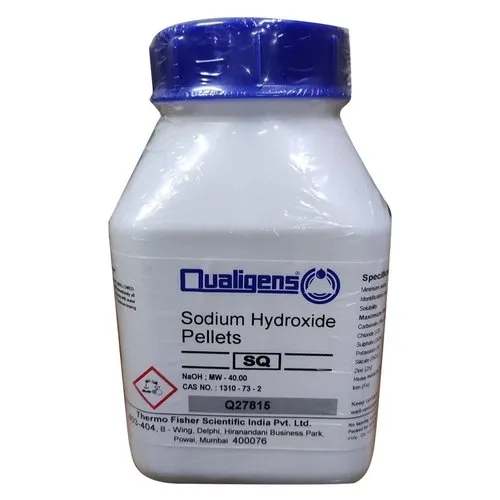Blog
Sodium Hydroxide pH – A Comprehensive Guide to Its Uses
Sodium Hydroxide pH: Understanding the Basics
Sodium hydroxide pH is one of the key factors to consider when working with this chemical compound, commonly known as lye or caustic soda. As a strong base, sodium can have a significant impact on the pH levels of solutions. Understanding its pH properties is essential in a variety of industrial and chemical processes.
What is Sodium Hydroxide?
Sodium hydroxide (NaOH) is a powerful chemical used in many industries, from cleaning products to manufacturing processes. It is highly soluble in water, and when dissolved, it releases hydroxide ions, making it a strong alkaline solution. The pH level of sodium typically ranges between 12 and 14, which places it at the higher end of the pH scale, indicating its strong basic nature.

The Importance of Sodium Hydroxide pH in Chemistry
The sodium pH level is crucial in determining its behavior in different chemical reactions. As a strong base, sodium hydroxide reacts readily with acids to neutralize them. This property makes it valuable in various industries where pH control is necessary, such as:
- Chemical manufacturing: Sodium is used in the production of many chemicals, including paper, textiles, and detergents, due to its high pH and ability to break down organic materials.
- Water treatment: The high pH of sodium helps neutralize acidic contaminants in water, making it safe for consumption and use in industrial applications.
- Cleaning agents: Sodium hydroxide’s high pH makes it effective at dissolving grease, fats, and other organic substances, making it a common ingredient in household and industrial cleaning products.
How Sodium Hydroxide pH Affects Industrial Applications
Sodium pH plays a vital role in several industrial processes. Its high pH allows it to break down complex organic materials and dissolve them, making it a preferred choice in industries like oil refining, textiles, and pulp and paper manufacturing. Below are a few specific applications where sodium pH is critical:
- Textile industry: Sodium is used in the bleaching and dyeing processes to control the fabric’s pH, improving color vibrancy and fabric durability.
- Food processing: Sodium is used to regulate the pH in food production, such as curing olives, processing cocoa, and thickening ice cream.
- Pharmaceuticals: Sodium hydroxide’s ability to control pH ensures the stability and effectiveness of medications.
Safety Considerations for Working with Sodium Hydroxide pH
Due to the high pH of sodium , handling this chemical requires proper safety measures. Direct contact with sodium hydroxide can cause severe skin burns and irritation. Eye exposure can lead to permanent damage. Here are some important safety practices when working with sodium hydroxide:
- Wear protective clothing: Always use gloves, goggles, and long sleeves when handling sodium hydroxide.
- Proper ventilation: Sodium hydroxide can release harmful fumes, especially when mixed with water, so it’s crucial to work in a well-ventilated area.
- Storage: Keep sodium hydroxide in airtight containers to avoid exposure to moisture, as it is highly reactive with water.
Understanding Sodium Hydroxide pH in Everyday Products
It component in many everyday products. You may encounter sodium hydroxide in products like drain cleaners, oven cleaners, and detergents. These products rely on the chemical’s high pH to break down grease, oils, and other stubborn residues.
Adjusting pH with Sodium Hydroxide
Sodium is commonly used to adjust the pH of solutions in both industrial and laboratory settings. Since it is highly alkaline, even small amounts of sodium can raise the pH of a solution dramatically. This makes it a valuable tool for chemists and engineers when precise pH adjustments are necessary.
The Environmental Impact of Sodium Hydroxide pH
When properly managed, sodium hydroxide is considered relatively safe for the environment. Its high pH can help neutralize acidic waste, which is beneficial in many water treatment facilities. However, improper disposal of sodium hydroxide can cause harm to aquatic ecosystems. This is why it’s important to neutralize sodium solutions before disposal, ensuring that the pH is within a safe range for the environment.
How to Measure Sodium Hydroxide pH
Measuring the pH of sodium solutions can be done using pH strips or electronic pH meters. Here’s a simple guide to measuring sodium pH accurately:
- Dilute the solution: Due to sodium hydroxide’s strong alkalinity, it’s essential to dilute the solution before measuring.
- Use pH strips: Dip the pH strip into the solution for a quick visual reading. Sodium solutions will typically show pH values around 12-14.
- Electronic pH meter: For more precise measurements, an electronic pH meter can give you an exact reading. This is particularly useful in industrial applications where accuracy is critical.
Conclusion: Why Sodium Hydroxide pH Matters
Understanding sodium pH is critical in many industries and applications. Whether you are working in chemical manufacturing, food processing, or environmental management, controlling pH levels with sodium is an essential part of maintaining efficiency and safety.
FAQS
- Is sodium hydroxide a pH of 14?
Sodium can have a pH close to 14 when it is in a concentrated solution. However, the exact pH depends on the concentration. A strong sodium solution will approach a pH of 14, indicating its strong basic (alkaline) nature.
- Is sodium hydroxide a base or acid?
Sodium hydroxide (NaOH) is a base, specifically a strong base. When dissolved in water, it dissociates into sodium (Na⁺) and hydroxide (OH⁻) ions, making the solution alkaline.
- What is the pH of dilute sodium hydroxide?
The pH of dilute sodium solutions is lower than concentrated solutions, but it is still basic (above 7). For instance, a very dilute sodium solution may have a pH around 10 to 12, depending on the level of dilution.
- Is the pH of NaOH always 13?
No, the pH of sodium (NaOH) is not always 13. The pH depends on the concentration of the solution. While a moderately concentrated solution might have a pH around 13, stronger solutions can reach closer to 14, and more dilute solutions may have pH values lower than 13 (but still above 7, indicating a basic solution).
